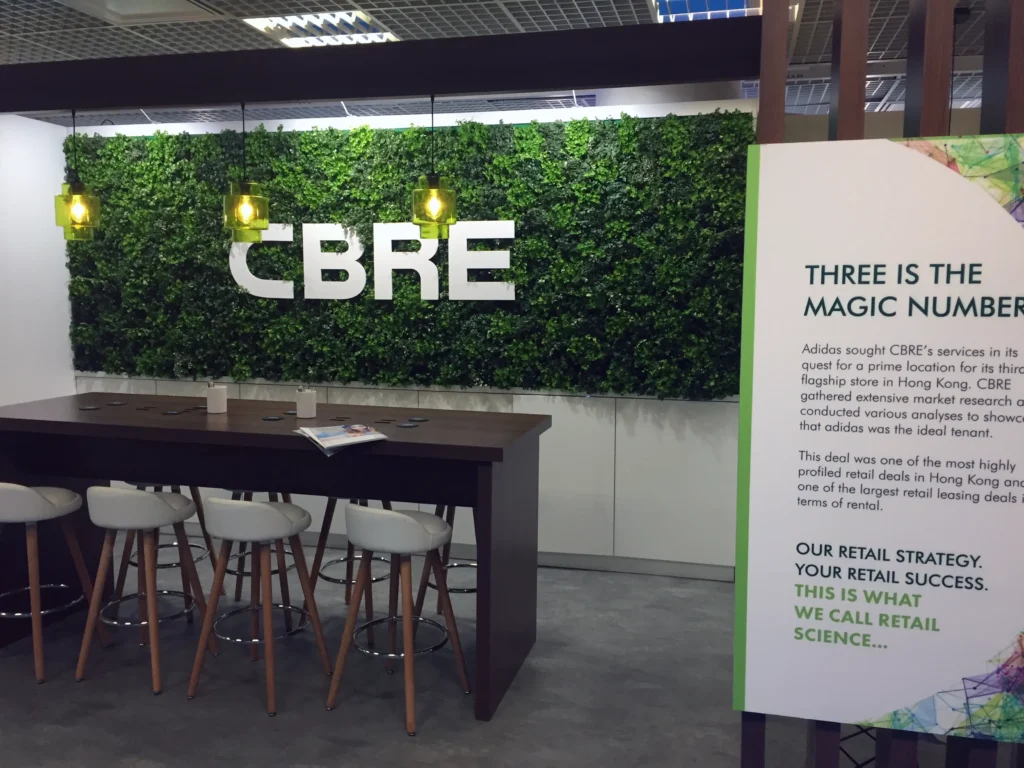
For nearly a decade, we’ve been helping CBRE make its mark at MAPIC, the annual global meeting place for retail and property players. Held each year in Cannes, the 2025 edition marked the event’s 30th anniversary, and it remains the place where big ideas, big deals and even bigger conversations happen.
For CBRE, it’s a real focal point of the retail calendar—an unmissable opportunity to connect with clients and prospects, and to showcase their world-leading expertise.
But what exactly does it take to nurture a partnership that’s spanned nine years (and counting)? Let’s rewind to 2016, when a simple PowerPoint deck turned out to be the spark for something much bigger.

That first project might have been small, but it set something exciting in motion. CBRE saw in us a creative team with a lot more to offer; in particular, the potential to help bring their brand to life in new, imaginative ways.
And as luck would have it, MAPIC—that major event for CBRE—was just around the corner. The team needed a creative partner they could trust with all their exhibition needs, so up we stepped.
And the rest? Well, you know how the saying goes.

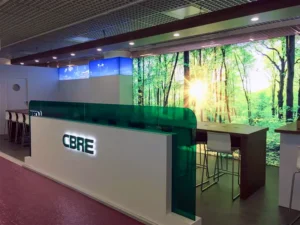
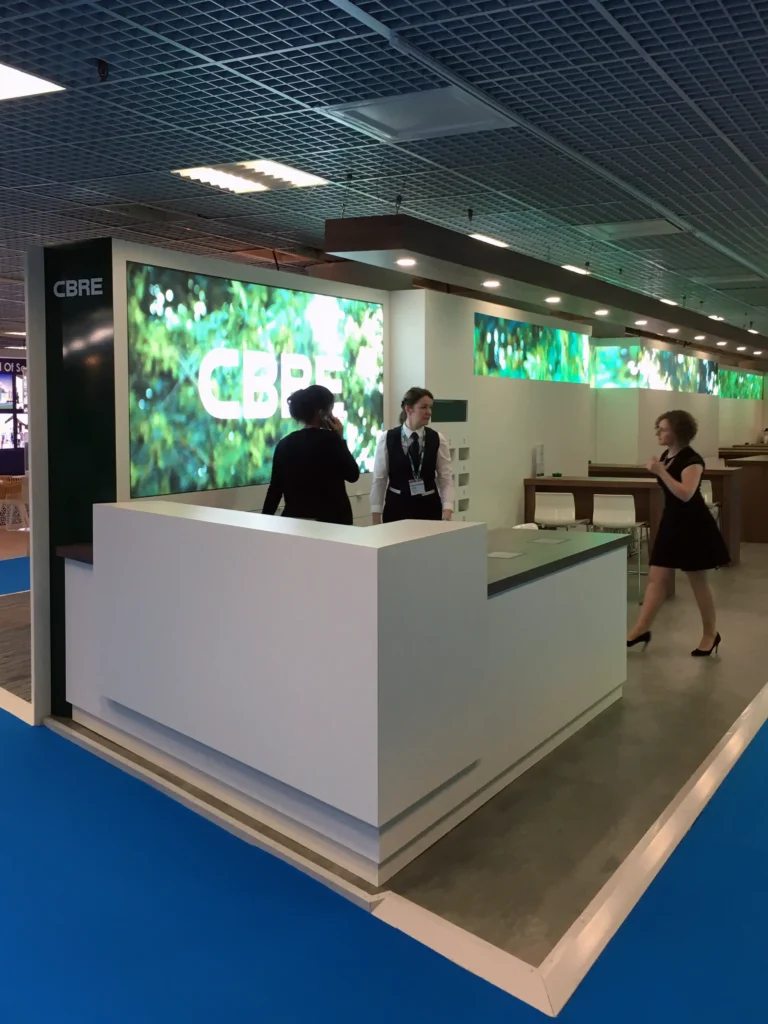
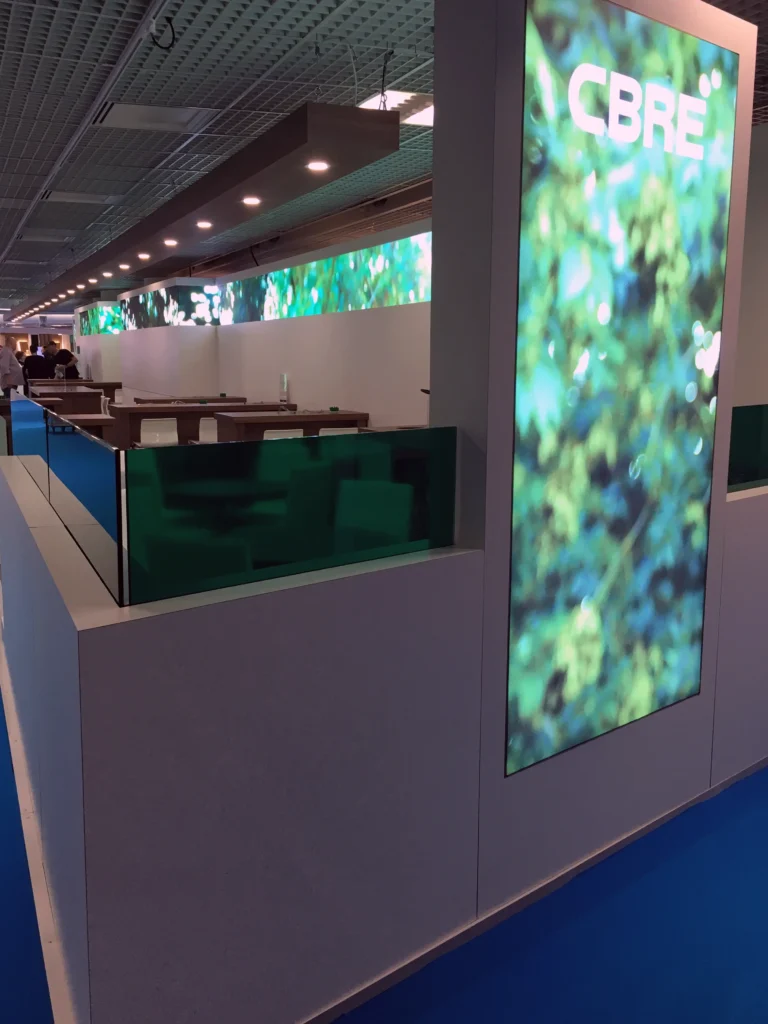
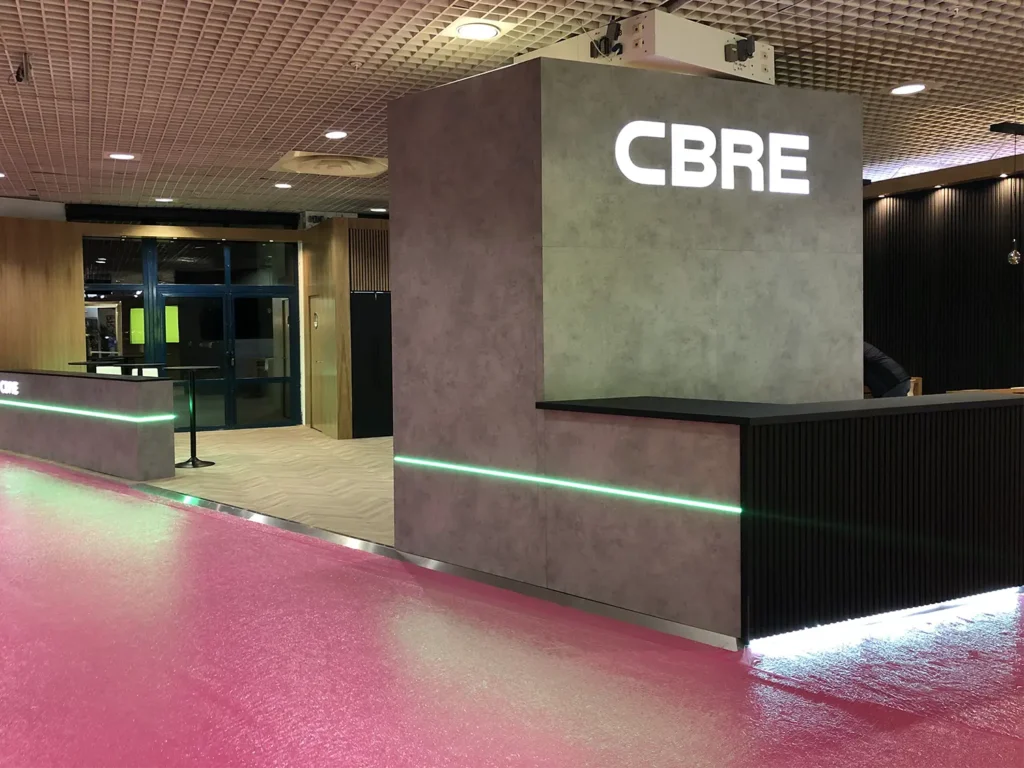
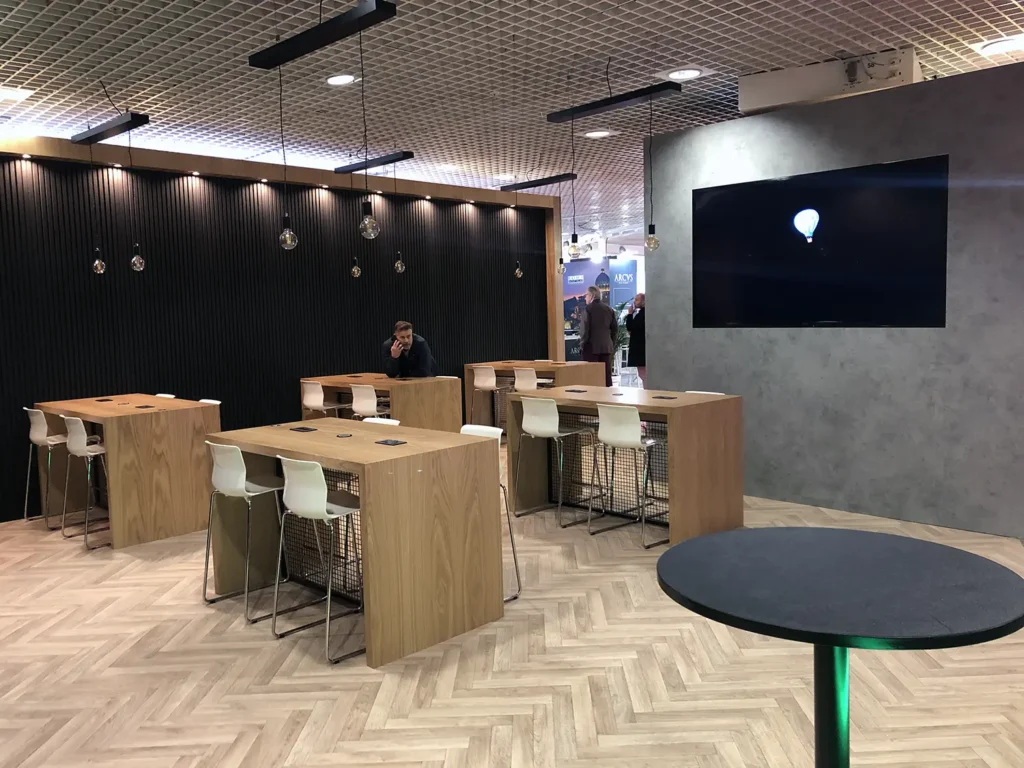
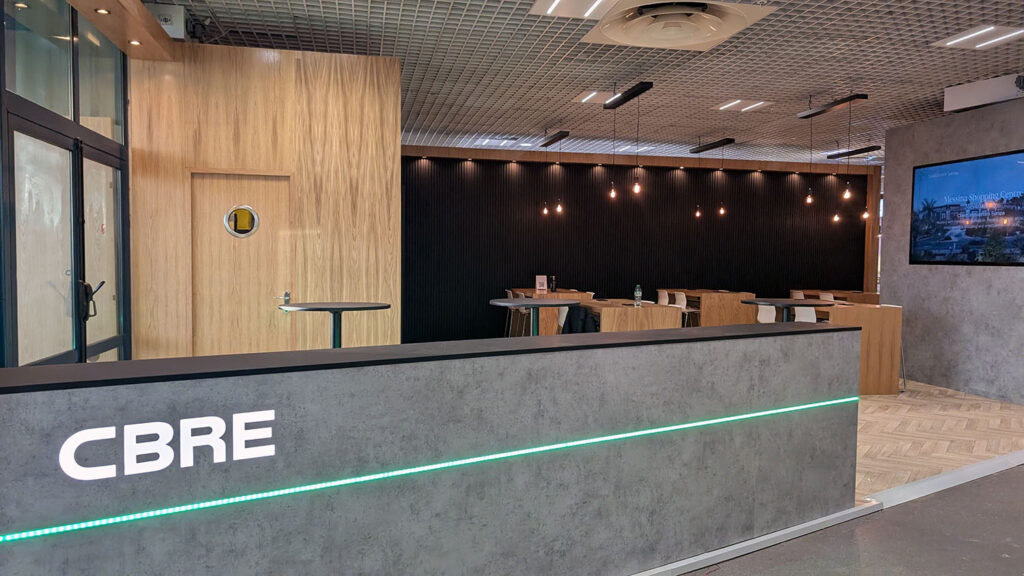
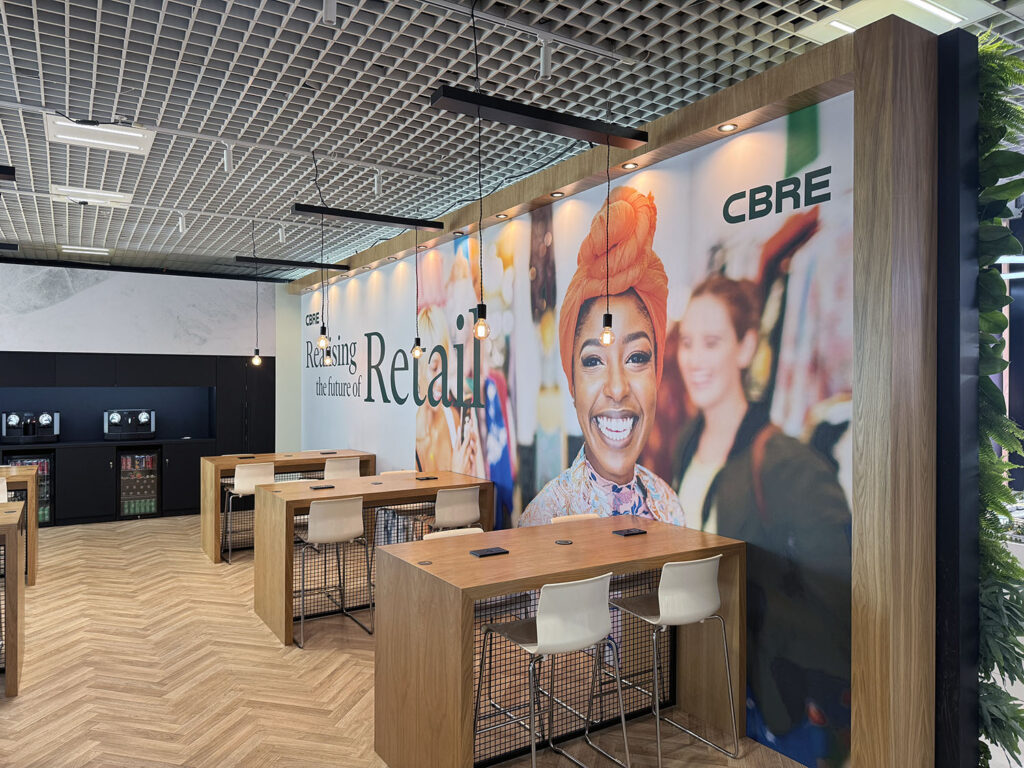
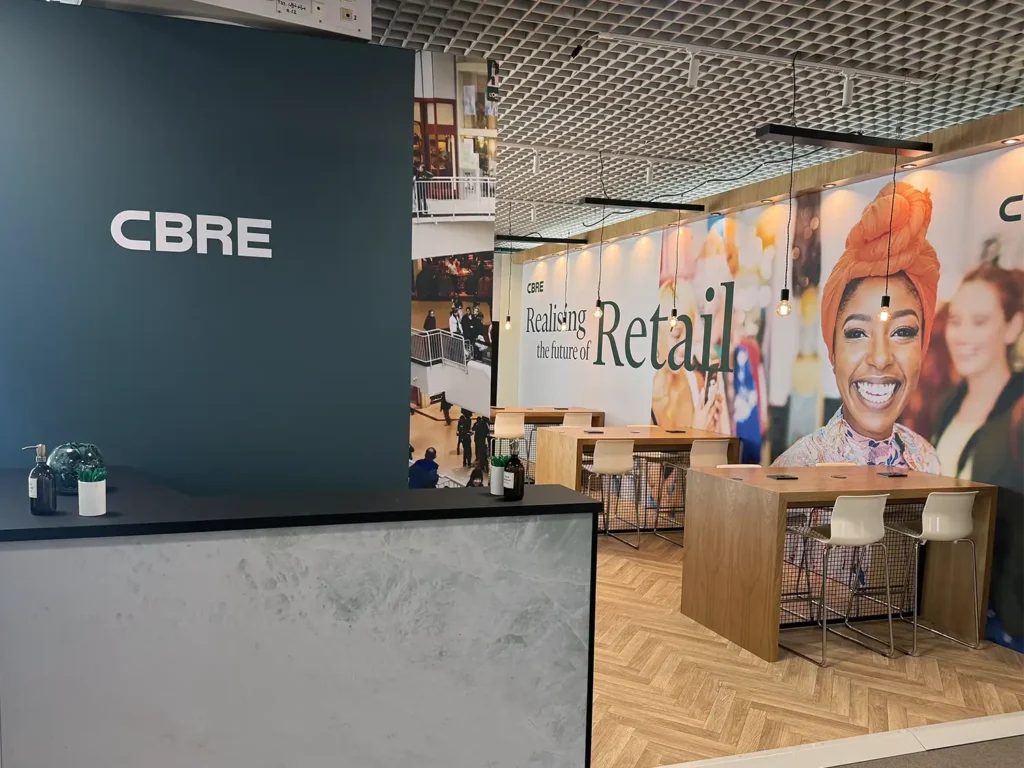
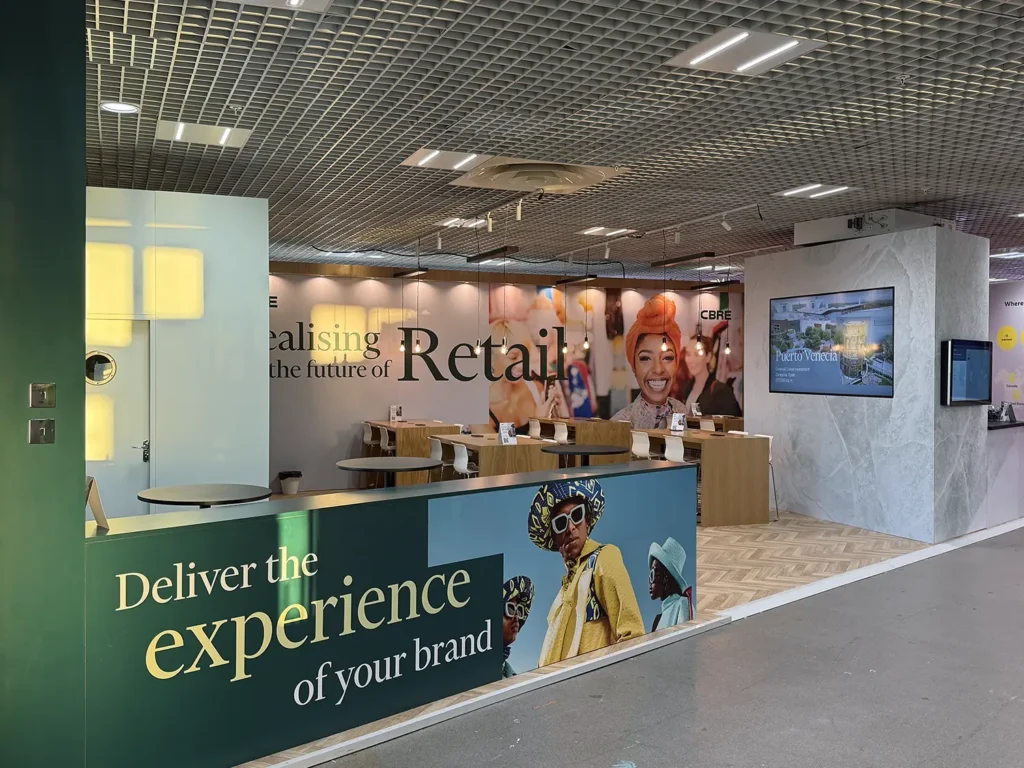
Since that first event, our role at MAPIC has grown and evolved year on year. The brief might stay the same (to design, build and deliver a stand that’s enticing, functional and unmistakably CBRE) but how we transform it into reality is always in motion.
Each year brings a new challenge: how do we make it even better than last time? It’s less about reinventing the wheel and more about evolving it with purpose.
That first year, it was all about striking artwork. The next, we introduced a natural world-inspired theme with lightboxes and LED strips to bring the outside in. Later designs embraced a sleeker, more minimalist look and feel.
As CBRE’s brand has developed, the stand has evolved right alongside it. Each new design captures the story of where the brand is at that moment, creating a space that looks great, feels inviting and, most importantly, functions as a dynamic meeting place.
Over the years, our relationship with CBRE has become about much more than design. We’re not just creating a stand; we’re delivering a complete event experience from start to finish. Each year, we take the brief and run with it, handling everything from initial sketches and specifications to build management and venue logistics.
We even have an event producer on site, working behind the scenes to keep everything running like clockwork. Need a quick fix or a lighting tweak? We’re already on it.
That kind of dependability builds real trust. CBRE know they can count on us to get things done, anticipating challenges before they arise and delivering the same high standard time after time.

Fast-forward to today, and we’ve just wrapped on MAPIC 2025. This year’s design built on everything we’ve created so far, adding a new layer of personality that reflects where the brand is heading.
After eight years (and soon to be nine) of collaboration, it’s more exciting than ever to see what’s next. Because for us, yes, MAPIC is an event, but it’s also proof of what long-term creative partnership can achieve.
So here’s to keeping things fresh, exploring new ideas and getting the job done—reliably, and with just the right amount of flair.
One event, endless content.
Exhibition podcasts. A ‘does what it says on the tin’ concept that means exactly what you think it does: a podcast recorded live at your exhibition stand.
It sounds simple—and that’s exactly why it works. Beneath the simplicity lies a surprisingly powerful opportunity for real-time brand storytelling, contagious audience engagement and long-term value that lasts long after your audience has gone home.
What’s not to love, right? If you’re not already googling podcast mics, here’s a stack of reasons why this slept-on format is both a no-brainer and a game-changer.
If you’re at an industry event, chances are your key opinion leaders and thought leaders are already on site. That means no travel arrangements, accommodation bookings or logistical spanners in the works to navigate.
All you need to do is create space for those conversations to happen. Hitting ‘record’ helps too.
If we’re being brutally honest, exhibition experiences can all blur into one for attendees. A live podcast setup changes that by creating a focal point.
Visitors linger longer when something interesting is happening. When people stick around, they’re more likely to engage in a meaningful way. And voilà: what would have been passive traffic becomes an active and invested audience.
When it comes to live events, momentum is everything (check out our thoughts on live edits for more on this). The experience itself is really just the start; for your message to truly stick, you need to make hay while the sun’s still shining.
The beauty of exhibition podcasts is that it’s easy to move quickly. We’re recording full conversations that need minimal editing—your content’s ready in hours, not weeks.
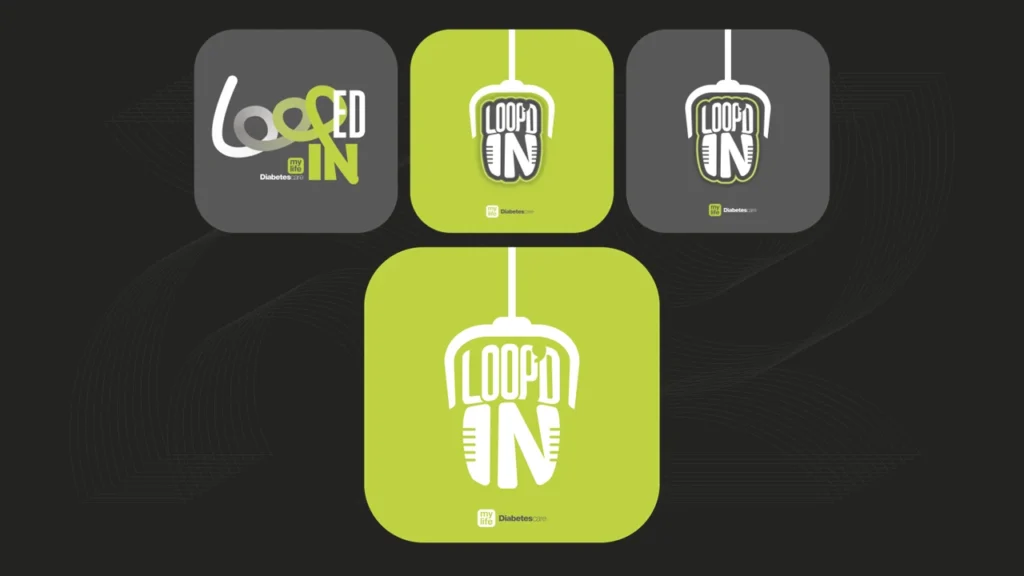
Never podcasted before? No problem. Our experienced crew knows how to capture crisp, studio-quality sound, even in noisy expo halls.
But we don’t stop at sound. Need branding? We’ve got you. Looking for a strategy? Give us an hour or two. A spot of host coaching to keep things sounding chatty and natural? Already handled. Point is, whatever it takes to get your series off the ground, we’ve got it covered.
That single session doesn’t just give you a podcast—one day of recording can give you a whole library of content.
From long-form episodes to snackable social cutdowns, highlights reels and campaign-ready assets, you get more reach, more mileage and more impact all from that one conversation. Sounds pretty good, doesn’t it?
So there you have it. You’re already investing in being there, and what you’ve got to say deserves to be heard. Let’s turn that into something people can keep listening to.
Why capturing your event (properly) might be better than the coffee.
Event day is here. Everything’s prepped and the buzz has begun. But we’ve got a harsh truth for you.
People forget most of what they hear at conferences. We’re talking 75–90%. After as little as an hour, retention can nosedive. And there’s only so much a coffee break can do to bring it back.
But there is a solution. One that might *even* be better than caffeine (yep, we said it).
When you record your event, you instantly create an on-demand library. Your guests can rewatch any session they choose, as many times as they want. Anyone who couldn’t make it on the day? They’re covered too. We’re talking some serious longevity—you’ve already done all the hard work; you might as well make it last!
We take live camera feeds and show content (think slides, videos, demos… whatever you’ve got) and turn them into a fully branded, broadcast-quality recording. All synced up. All ready to share the very next day.
A live edit means no waiting weeks for post-production. What your audience saw on the day is what they’ll see on playback—seamlessly edited and ready to go.
Time’s everything here. You’ve got to strike while the iron’s hot if you want to keep people engaged.
We’ll split your event recording into bite-sized sessions so your audience can dip back in when it suits them, plus we’ll pull out the best bits too. Want clips for social? No problem. Need a highlights reel to tease next year? Easy. Fancy something quick and sizzling to send to sponsors? Already sorted.
Everything’s packaged neatly before the last truck leaves.
Whether you want to boost accessibility, be more environmentally friendly or maximise your reach, we’ve got a full livestream production ready to go. We do this for events big and small, from product launches to full-scale conferences.
So yes, keep the coffee break on the day. But for lasting impact? Hit record too.
(And if you’re curious how easy this can be, check this out.)
It’s not what you say, but how you say it.
Let’s be honest, congresses, conferences and similar events are about so much more than “next slide please”. At heart, they’re about three things: sharing knowledge, building networks and creating a sense of community. Done right, these elements don’t just coexist—they work in synergy.
But here’s the catch: none of that good stuff happens if your audience has checked out before you’ve even got to the keynote. In an age where attention is a currency that’s increasingly hard to hold on to, how you deliver your content matters more than ever.
So, how do you make it land?
You get creative.
A strong, cohesive theme is the spine of your event. It gives structure and pulls everything together into one clear and memorable entity. Without it, you’re left with a series of disconnected sessions, each doing their own thing, jostling for attention and making the day feel disjointed.
You want your audience to connect with the bigger picture—each session should add a brushstroke to the same canvas, not feel like it belongs in a different painting.
Nobody enjoys being talked at; it’s way more fun to be part of the action. Plan your agenda around segments. The punchier, more varied and full of surprise they are, the better.
And don’t forget that narrative thread. People are far more likely to get stuck in when they understand the why behind what they’re being asked to do. Active participants > passive listeners. Create partnerships.
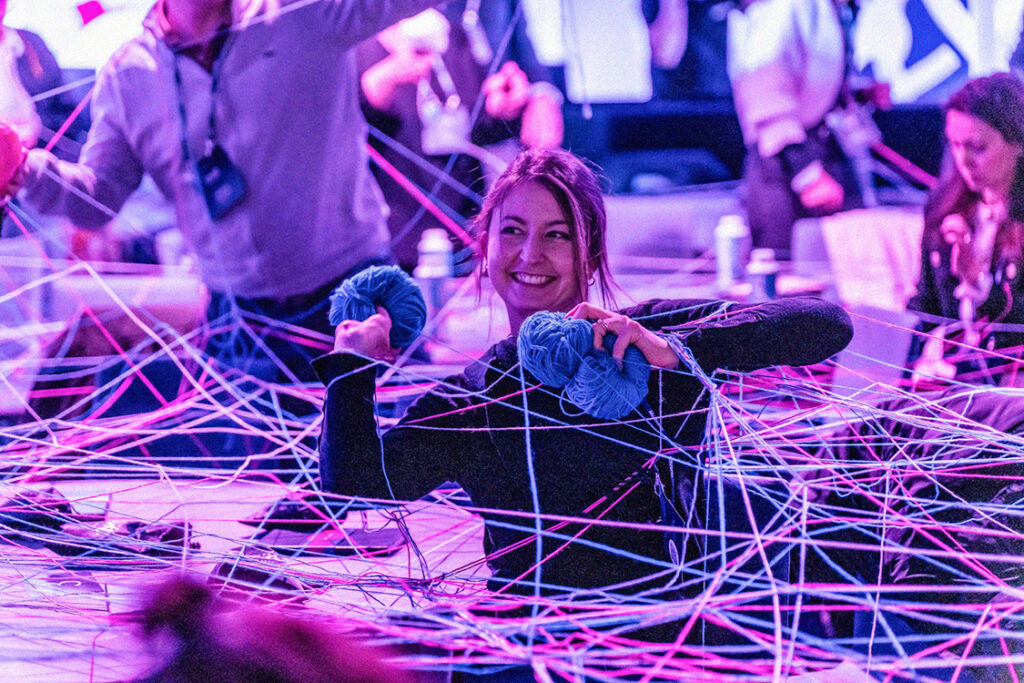
Brutal as it sounds, people forget most of what they hear at conferences. Information retention during passive formats is low—like, 10–25% of key messages from a full-day event low—and even then, that’s only if the ideas are clearly structured and reinforced.
Research also suggests that retention starts to nosedive after around 45–60 minutes of high-density content. So, strip it back! Focus on a few big ideas and find ways to reinforce them. Schedule breaks, let your audience get hands-on and watch their retention skyrocket.
Time for some science. Humour isn’t just about fleeting laughter—dopamine is proven to boost memory. A healthy dose of fun turbocharges our engagement with the content and increases the staying power of the message behind it.
It doesn’t have to be silly; it just has to be human. Whether it’s something witty or simply moment that makes people smile, it all works. Make your audience feel something. Ideally, joy.
Congresses bring together all sorts. Different people turn up looking for different things, which is yet another reason why how you deliver your message matters as much as what you say.
Shared cultural formats are a great way of connecting with a broad and varied crowd. Could your message be worked into a fun and relatable format, like a gameshow or chat show? Make it bite-sized and impossible to skip past—when the delivery feels fresh and exciting, people are more likely to tune in.
The crux of it is: you can’t expect people to listen if you’re not speaking in an interesting way. Your audience’s experience has to be top of the bill, even if it means having to rethink your delivery.
You can’t rely on just getting attention; you have to go out of your way to earn it. That means not doing the same old stuff that everyone else is. Instead of just presenting your message, give it production value. That way, your audience will still be thinking about it months down the line.
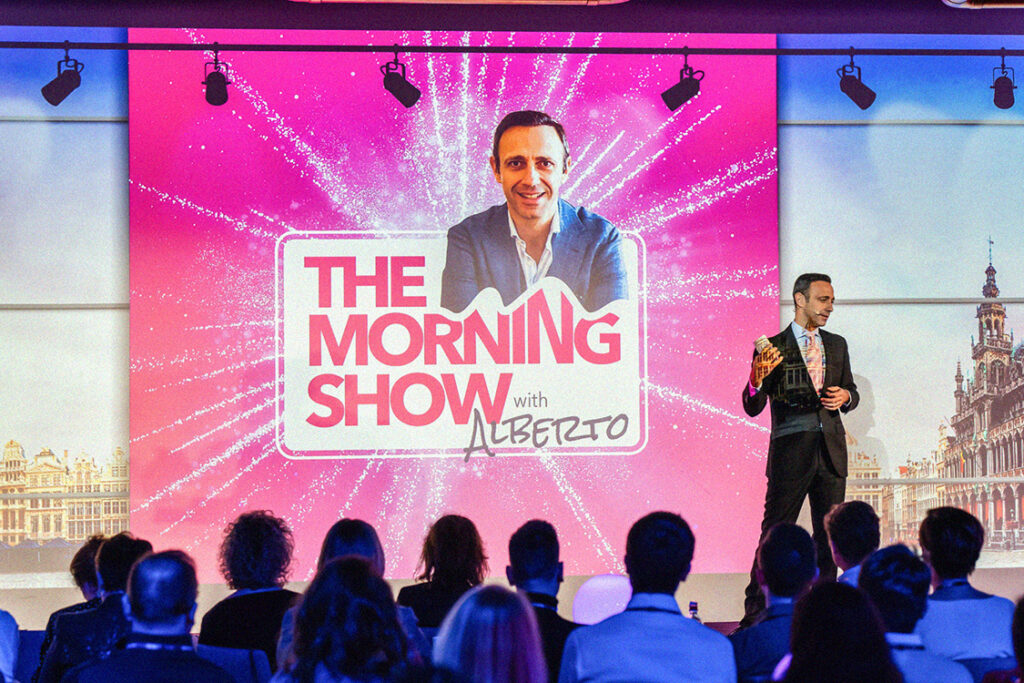
When a client asked us to dial up the energy and bring a sense of cohesion to their section of a wider meeting, we knew we had to give them something out of the ordinary.
Inspired by daytime TV, we created The Morning Show—a peppy and entertaining format complete with its own branding, credits, theme music and stings. We even had our ‘stage manager’ hype up the studio audience to get them fully on board with the concept before the cameras started rolling.
Instead of sessions, we ran segments which our live host pulled together into one dynamic package. Each segment, while unmistakably on theme, delivered something different:
The result? Rave reviews, enthusiastic engagement and a client who’s already thinking about The Morning Show episode 2.
Ready to make your next conference unmissable? Let’s chat engagement.
We won’t name names, but a trusted colleague of ours once said, “Success lies in making the complex seem effortless.” Stick it on a plaque.
For us, that idea of making the complicated look easy is more than an aspiration; we treat it as a commitment. It’s something that drives every project we turn our hand to, especially when it comes to events.
Whether it’s 15 delegates in a boardroom or thousands of attendees at an exhibition, we thrive on managing the behind-the-scenes stuff that makes most people sweat. Think last-minute changes, technical complexities, multiple moving parts, all handled seamlessly to deliver an event experience that’s memorable for all the right reasons.
But rather than us blowing our own trumpet, let’s get into the specifics. When we say “We make events easy”, here’s what that really means—and how it makes a difference for our clients.
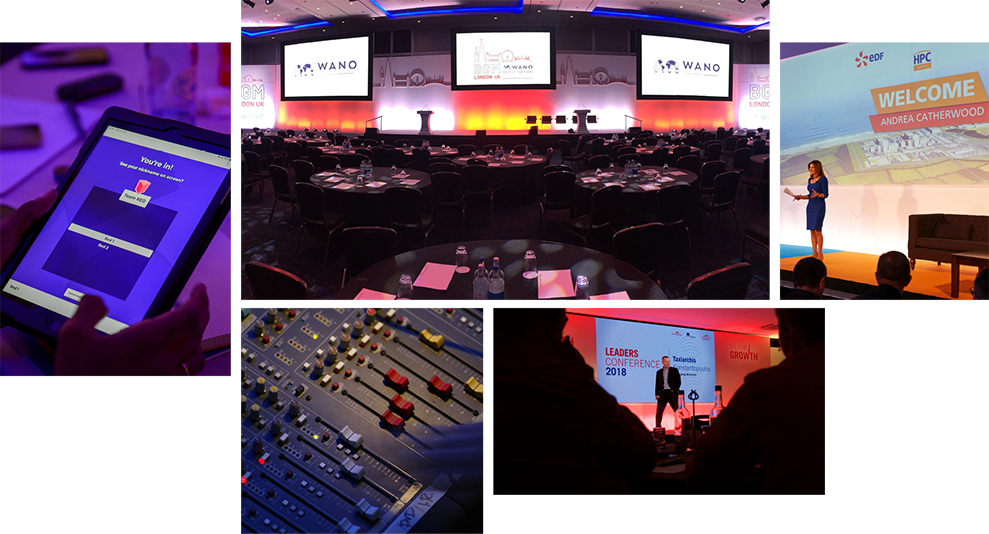
Let’s be honest, events can be complex beasts. From venue negotiations and safety protocols to that one specific lighting fixture you absolutely must have, there’s a lot to juggle.
…which is industry speak for: “A logistical nightmare that keeps you awake at 3 am.”
But not on our watch. Your dedicated project manager becomes your event ally, handling everything from initial concept to final teardown. That includes everything else that comes with it: nailing down the perfect theme, developing your comms strategy, producing your event collateral—you name it, they take care of it.
They know your vision inside and out, anticipate your needs before you even voice them and, most importantly, they’re just one call away.* Always.
*Just, please, don’t call at 3 am. We need our beauty sleep…
Remember when you had to explain your vision using hand gestures and hope for the best? Well, those days are gone. Our 3D wizardry, flythrough animations and AI-assisted toolkit mean we can bring your event experience to life before a single piece of equipment arrives on site.
It’s not just pretty pictures; it’s practical magic.
Spot issues, make tweaks and perfect your vision, all before spending a penny on setup. We’ll show you exactly what to expect, so there are no on-the-day surprises. And, what’s more, we’re fully maximising AI’s potential to make your stands and visuals better, quicker and cheaper. Just look at what our Joint MD had to say.
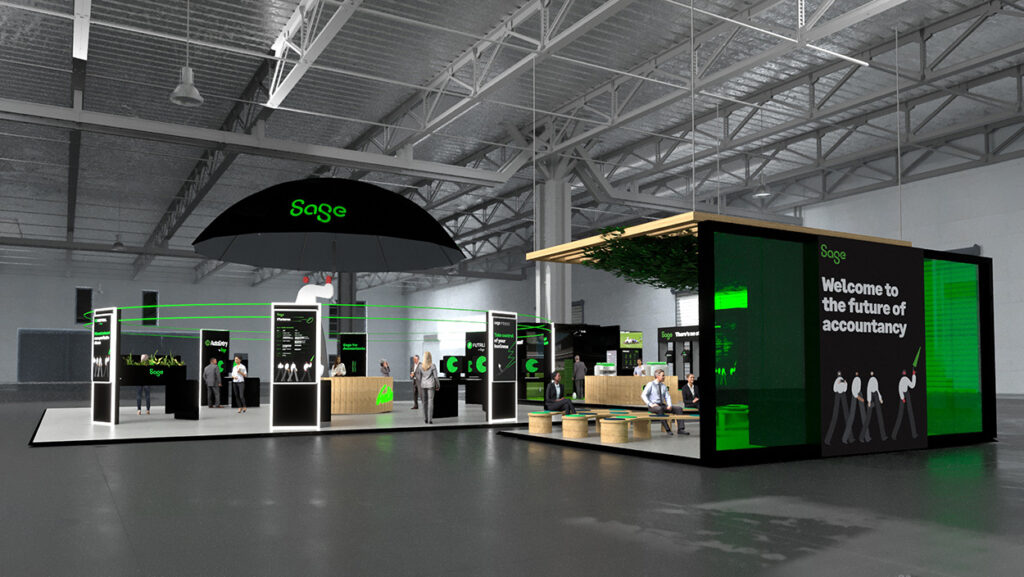
Great events need great content, but who has time to coordinate designers, animators and tech teams while managing everything else?
Psst… the answer’s us. We do.
The team orchestrates everything from creating template files to lay solid foundations, through to handling formatting inconsistencies and last-minute changes, making sure that your content performs flawlessly when the spotlight hits.
Our producers rehearse transitions, test every video and create backup plans for your backup plans. Because in live events, “it should work” just isn’t good enough.
Events aren’t just about what happens on the day—they’re about the story you tell before, during and after.
This is where our Creative team really shines. We take the time to understand your objectives, your audience and what makes them tick. Then, we craft messaging that connects. Sometimes it’s a surprising statistic that changes perspective; other times it’s a personal story that tugs at heartstrings. Often, it’s an interactive element that turns passive listeners into active participants.
Whatever approach we take, the result is the same: an unforgettable message that stays with your audience long after the event ends.
The world has changed and so have events. Whether you’re going fully virtual or creating a hybrid experience, we’ve got you covered.
We’ve all been to virtual events where technical issues, poor production values or clunky interfaces created more barriers than bridges. We do things differently. Our technical know-how makes remote attendees feel like they’re in the front row.
But technology is just the beginning. We also reimagine how content is delivered for digital audiences, incorporating interactive elements, shorter segments and engagement tools that keep remote attendees just as invested as those in the room.
So, there you go. Our comprehensive, collaborative and remarkably easy approach to events. Got one on the horizon? Drop us a line and let’s chat about how we can make your next event the easiest—and most impactful—you’ve ever produced.
Recently, our very own Adam Sherlock, Corey R., and Rebecca Darley shared why the secret sauce to unforgettable events isn’t found in algorithms alone—but in human imagination, playfulness, and creativity.
When you try to narrow down what makes a great event, words like connection, excitement and creativity spring to mind.
But what about fun? When we really gave it some thought, it seemed to us that fun—or more specifically, playfulness—is a crucial yet often overlooked element of what makes an event memorable for all the right reasons. When used well, it has transformative potential, turning a run-of-the-mill experience into something truly unforgettable.
Playfulness can be a powerful tool. But, speaking of powerful tools, how does it fit in with the biggest buzzword on everyone’s lips right now?
We’re talking, of course, about AI.
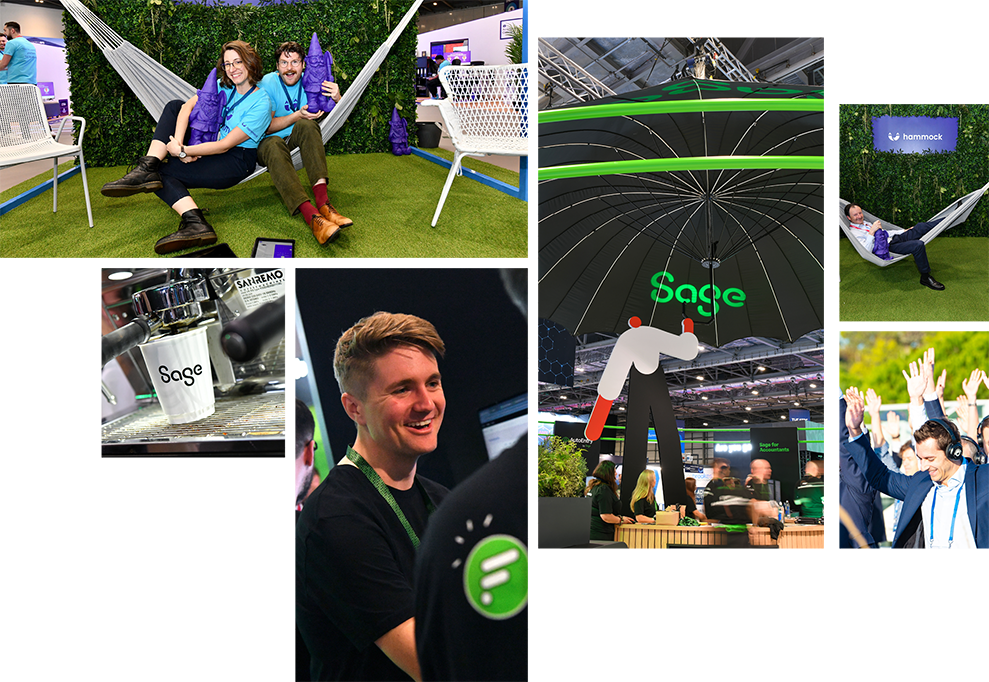
As a word, ‘play’ is difficult to neatly define precisely because it encompasses so many different activities, contexts and purposes. So, rather than us sit here and try, we’ll go straight to the experts.
Peter Gray, Professor of Psychology at Boston College, argues that ‘play’ has four defining characteristics:
It’s easy to see the connections between AI and those first three characteristics in particular:
But it’s that fourth point we really want to home in on. Can AI replicate the creativity and imagination of the human brain when it comes to playfulness?
We’d argue that, no, it can’t.
Back to events—or more specifically, great events. Think back to your last memorable exhibition: Was it the tech alone that made it stand out, or was it something more personal and unexpected? Often, it’s a clever idea dreamed up by someone who understands what genuinely resonates with people.
Take our stand for Sage at Accountex. The idea for our centrepiece (a GIANT umbrella, representing the uniting of their brands under one… well, umbrella) came straight from our very own brains. It was human imagination that sparked the idea, and human graft that delivered a quirky, fun and inviting experience that attendees simply couldn’t resist snapping a picture of.
Sure, we could have used AI to help generate a similar concept, but it’d have been nowhere near as good. Aside from the sheer scale of the thing, it was the subtle human understanding of humour, context and emotional connection that made it such a talking point.
That’s the thing with AI. It supports, but it doesn’t create. At least, not in the same way that we do.
What AI does really well is amplify human ideas. It also helps boost efficiency in the planning stages—things like rapid idea generation, fast visualisation, and predictive analytics are invaluable when it comes to streamlining our processes.
Crucially, the more streamlined our processes, the more time we have to push creative boundaries.
It’s a collaborative relationship, not a competitive one. The best event ideas, the ones that spark laughter, delight and connection, will always need a human touch. No amount of algorithmic planning alone can generate the genuine buzz of good, old-fashioned fun.
So, where does this leave us?
AI undoubtedly offers exciting new possibilities for event planning, helping us refine and execute our playful, creative ideas. But it’s authentic, spontaneous human interactions that create the real power of play at events. While AI is a valuable assistant, it’s never the star of the show.
At Outlook Creative, we believe in playful partnerships—human imagination, supported by smart AI. The future belongs to those who can harness AI’s strengths while never losing sight of what makes events truly unforgettable: creativity and human connection.
After all, you can programme AI, but you can’t programme genuine fun.
Now, excuse me while I go and ask ChatGPT how to fix my boiler.
Feeling inspired? Let’s bring some FUN to your next project. Get in touch to see how we can collaborate.
In case you missed it, we recently launched Inside Outlook—our first ever outward-facing digital magazine. And we’re really proud of it! It’s the first time we’ve truly flung open the door to our world of creative problem-solving and invited everyone in for a hearty dose of all things Outlook Creative.*
Have a flick-through while you’re here. It’s full of honest conversations, stories of fulfilling client partnerships, and insights into the thought processes behind our work—essentially, all the things that get the cogs turning.
But the process of getting here sparked a wider debate. Isn’t a digital magazine a bit of a rogue move? We all have busier lives, shorter attention spans, and more content to digest than ever. It’s a short-form world. Surely no one’s going to read a 60-page magazine?
We’re going to go out on a limb and say…We think they will.
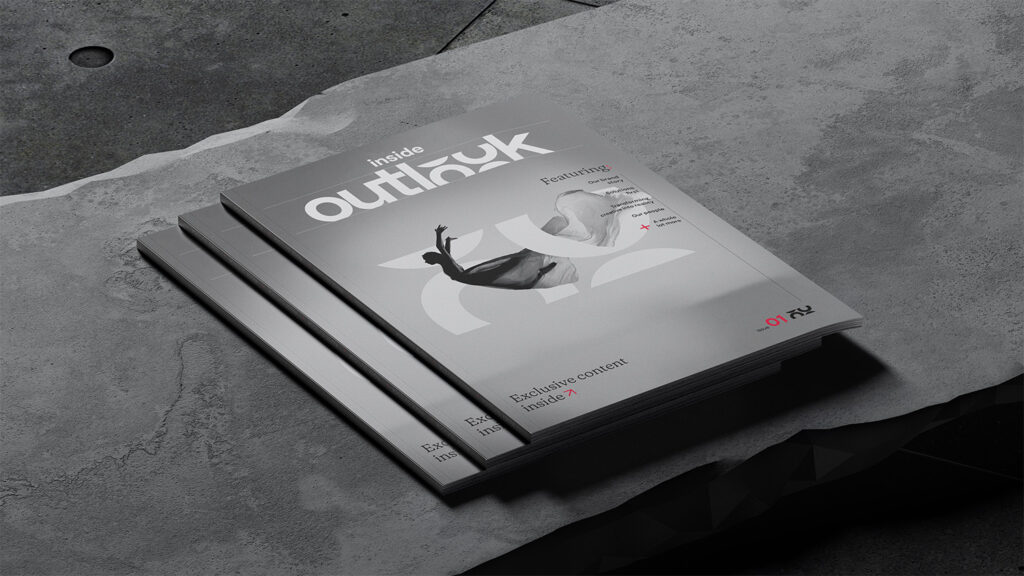
This isn’t just us blowing smoke up our proverbial. Digital magazines aren’t a new thing at Outlook Creative—our internal magazine, The Outlook, publishes three times a year and receives consistently high engagement rates. In fact, its popularity is what inspired a host of additional longer-form publications (including the one that’s the subject of this article).
We’re also noticing a growing trend towards long-form content among our clients. We recently won a competitive pitch to work with Salts Healthcare on their The Salts Way campaign. Our proposal for this lifestyle-inspired, nurse-led movement is centred around a campaign linchpin of—you guessed it—a carefully curated magazine.
Now, these examples may be anecdotal, but the broader point we’re making is echoed by the wider industry and consumer behaviour.
It’s not news that AI is transforming marketing at a rate of knots. But as a direct reaction to the saturation of uniform and often impersonal AI-generated content, experts predict that human-centric content, storytelling, and making an emotional connection will become more important than ever throughout 2025 and beyond.
In other words, people are craving authenticity and human stories. Digital magazines (and other longer-form mediums) provide an ideal platform for delivering the depth and meaningful engagement audiences are looking for.
“People are craving authenticity and human stories. Digital magazines (and other longer-form mediums) provide an ideal platform for delivering the depth and meaningful engagement audiences are looking for.”
We’re not saying that long-form content is the be-all and end-all of answering this need for a genuine, trusted voice. What we are saying is: Don’t write it off as part of a bigger strategic picture.
Because, while a pithy social post, short blog, or video is great for capturing attention, longer-form pieces are where you maintain that interest as part of an integrated cross-channel strategy, meeting your audience further down the funnel with the specifics of how your offering can make their lives easier. It’s also an opportunity to demonstrate thought leadership and authority on a more extensive scale—qualities that build confidence and scratch the authenticity itch.
So, it’s clear that long-form content is far from dead. It’s actually alive and kicking when used strategically—for example, a digital magazine that offers an interactive, multimedia-rich experience that stands the test of time…
That’s why we stand by our assertion that we think people will read Inside Outlook. And we’d hate for you to miss out.
“Long-form content isn’t dead. It’s actually alive and kicking when used strategically—for example, a digital magazine that offers an interactive, multimedia-rich experience that stands the test of time…”
*Everything featured is work our NDAs allow us to talk about. Anything else remains for our respective clients’ eyes only.
So, there you have it. That’s Inside Outlook. Want to feature in the next issue or have a magazine of your own? Get in touch and let’s chat.
We love the art of simplicity at Outlook Creative, so I’ll precursor this with a back of a napkin version so you know what to expect: This is all about the power of listening to clients. And I mean really listening.
Because it’s only when we really, properly listen that we’re able to evaluate everything to deliver an approach that not only meets a client’s needs but goes one step further. We do this by showcasing the wealth of our connected capabilities and how, together, they can help drive a marketing and communications strategy forwards in a more unified way.
As you will have seen, we’ve undergone a bit of a brand makeover ourselves. No sooner had we started planning for it than an opportunity to pitch for Nikon landed. It was the perfect opportunity to test some of our initial thinking.
Despite the work not being fully fleshed out, the vision for our new proposition was pretty simple—articulate our wealth of capabilities and expertise via a tight narrative that’s really easy to digest.
Like every brand, it’s vital for people to ‘get it’ but we also wanted to ensure we were in a position for clients to understand what we’re all about—and not just in relation to a channel-specific brief, for example. As a creative agency that’s rooted in production reality with a myriad of in-house skills, we want our clients to understand the breadth of support we can offer.
It’s this positioning that also segues into the bigger picture of connected experiences. In the context of wooing a potential new client, it’s often a perfect storm of gentle interrogation and the asking of some revealing questions that, you never know, might yield a revealing answer. It’s that vital additional insight that enables the crafting of a proposal that’s a little more exciting and provides some real value.
And what client doesn’t like to receive an agency response that’s nailing the initial ask, but also goes beyond by highlighting other areas that could be exploited for the greater good?
Sometimes it’s also about taking some calculated risks that, based on our discovery, research and experience, feel relevant and authentic for the client—providing real value that’s specifically designed for them, not a retro-fitted, copy-and-paste job.
Back to Nikon. Upon receiving the original brief for a small event in Copenhagen, we knew there was also an opportunity to take full ownership of their exhibition programme across Europe. So, we proved efficiencies, consistency and economies of scale through a creative and strategic plan that was bedded in the parameters of sustainable production, logistics and delivery.
Our plan gave the Nikon team peace of mind that we could not only execute an exhibition booth they’d be proud of but do that at scale across the continent, while also considering the integration of communication and content solutions.
We’re a full-service creative agency and, as the context of this conversation was around events, it naturally leaned towards some of our other core capabilities. The way in which we now talk about ourselves also does this—it’s our goal to be a safe pair of hands for clients, whether we’ve worked together for a decade or we’ve just met.
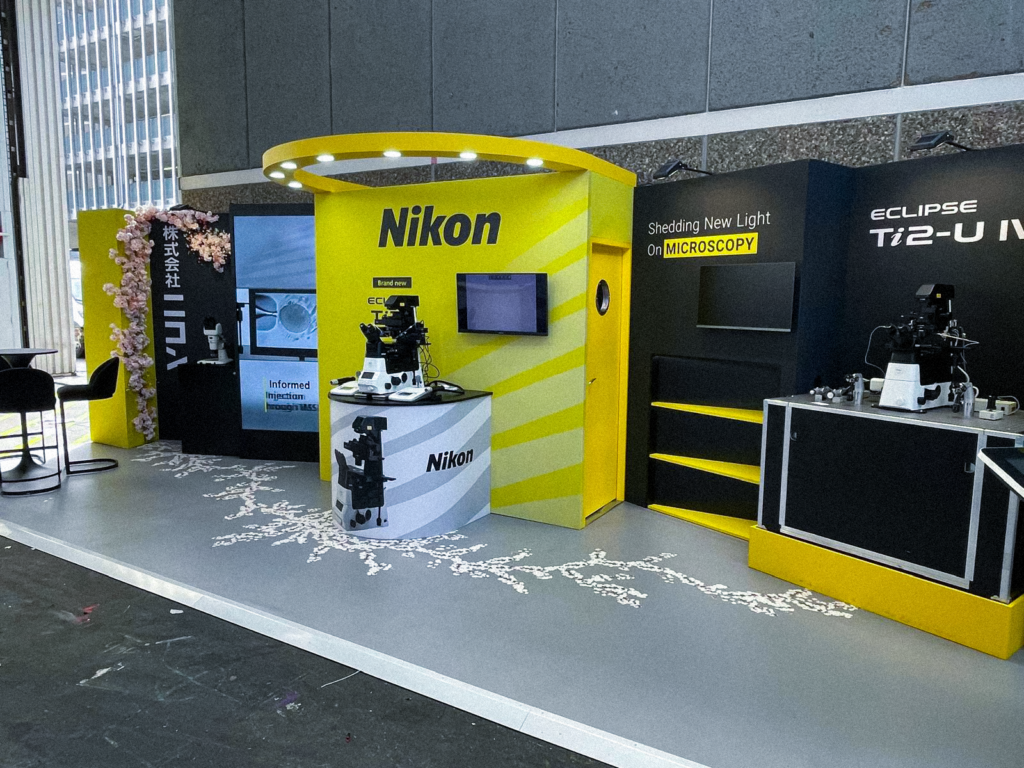
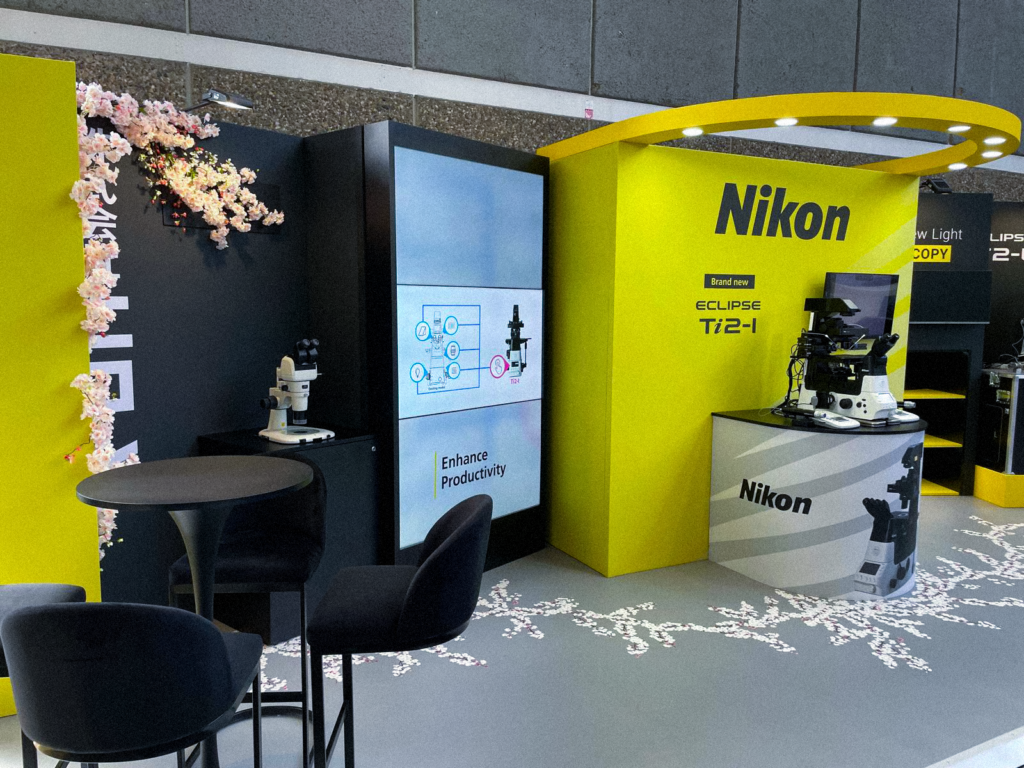
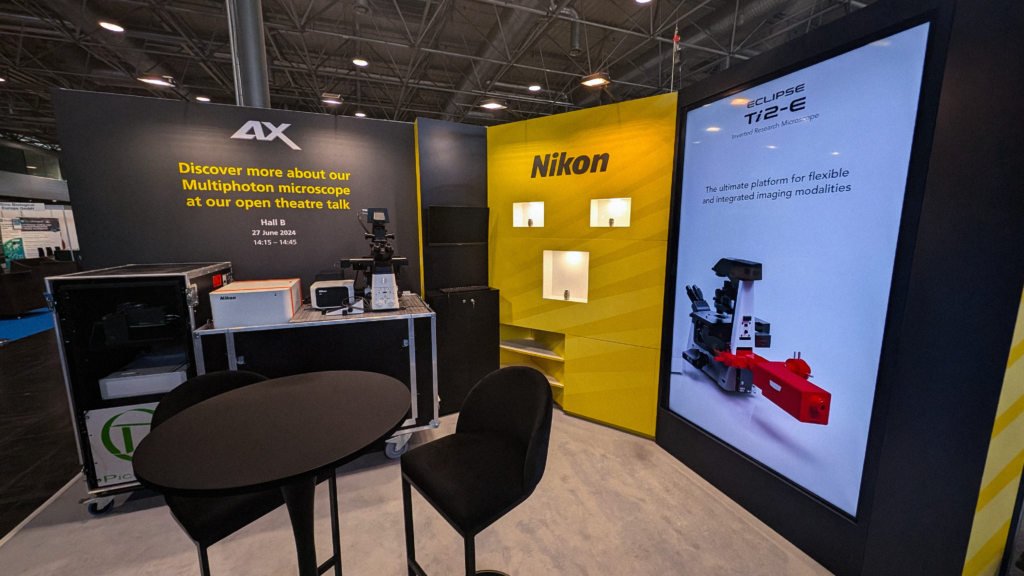
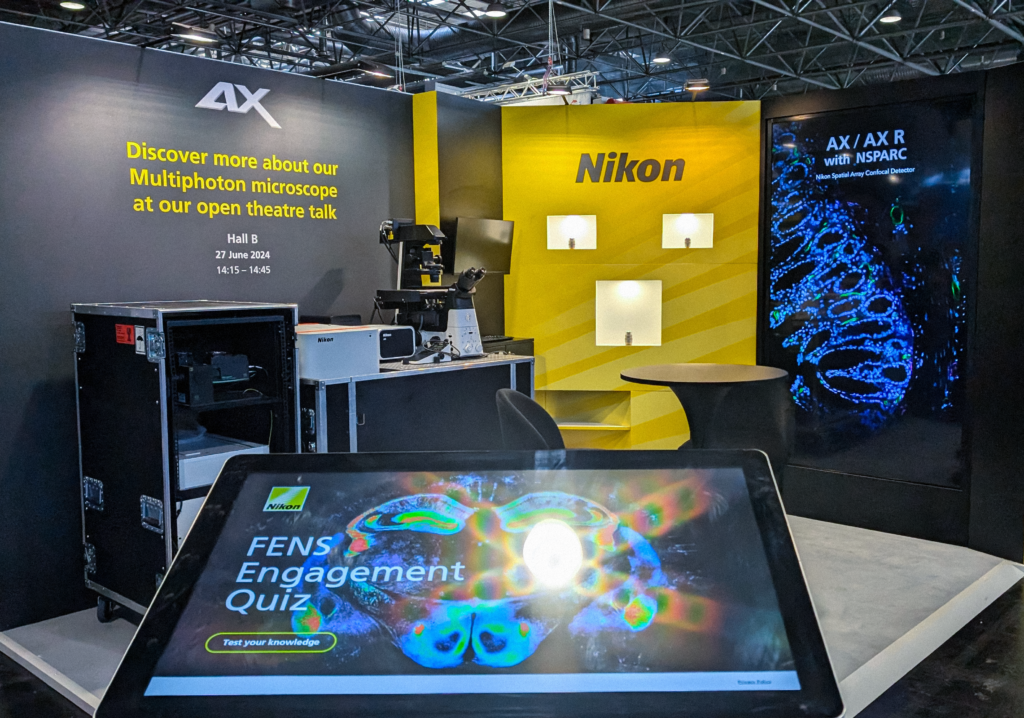
We recently spent a day with all of Nikon’s key stakeholders in Amsterdam. Pete Michels, our Creative Director, and Mark Hadland, Nikon Client Lead, delivered a creative workshop that stripped things back to basics to identify Nikon’s most pressing needs and how we could help—everything from brand and specific market challenges to channel executions.
We’re proud to be working with Nikon and the exciting journey we’ve already taken together has helped build a solid foundation. The relationship is developing organically, driven by our new proposition and inquisitive nature along with our core values: commit, collaborate, create.
From a standing start following a competitive pitch, we’re now delivering all their microscopy exhibitions across Europe. We’re working closely together on all their design and digital output; we’re delivering brand and communication guidelines, along with an event toolkit that drives consistency across Europe while accommodating the nuances of their local markets and the need to deliver various campaigns at different scales.
The toolkit focuses on the implementation of a connected experience strategy and an authentic communications plan to drive richer, more meaningful experiences and refreshed creative and design that pulls everything together. We’re also making sure we can quantify the engagement at each event and can now detail customer journeys that prove the power of certain customer experiences and engagement tactics.
It’s a rewarding feeling to embark on a new client journey that is truly anchored around elevating and building their brand amongst their customers and industry peers but also their employees across the European business.
If there’s one takeaway, it’s that our new approach has recalibrated our people and our client relationships in a really positive way. We’re all fully charged and ready to embark on whatever you may want to throw at us.
This goal is a key component of our wider ambition to build an agency that partners with clients for the long-term. Clients that become friends, brands that become ours as much as yours. We want to become an extension of a client’s team—a trusted partner. We thrive on that type of long-lasting relationship and the open dialogue it creates. It takes listening, being inquisitive, and staying proactive in seeking out the next opportunity or challenge for our clients. It’s also what makes us proud to be part of Outlook Creative.
Keen on building a long-term partnership with us? Or want to expand on an existing one? Drop us a line: sales@outlook.co.uk